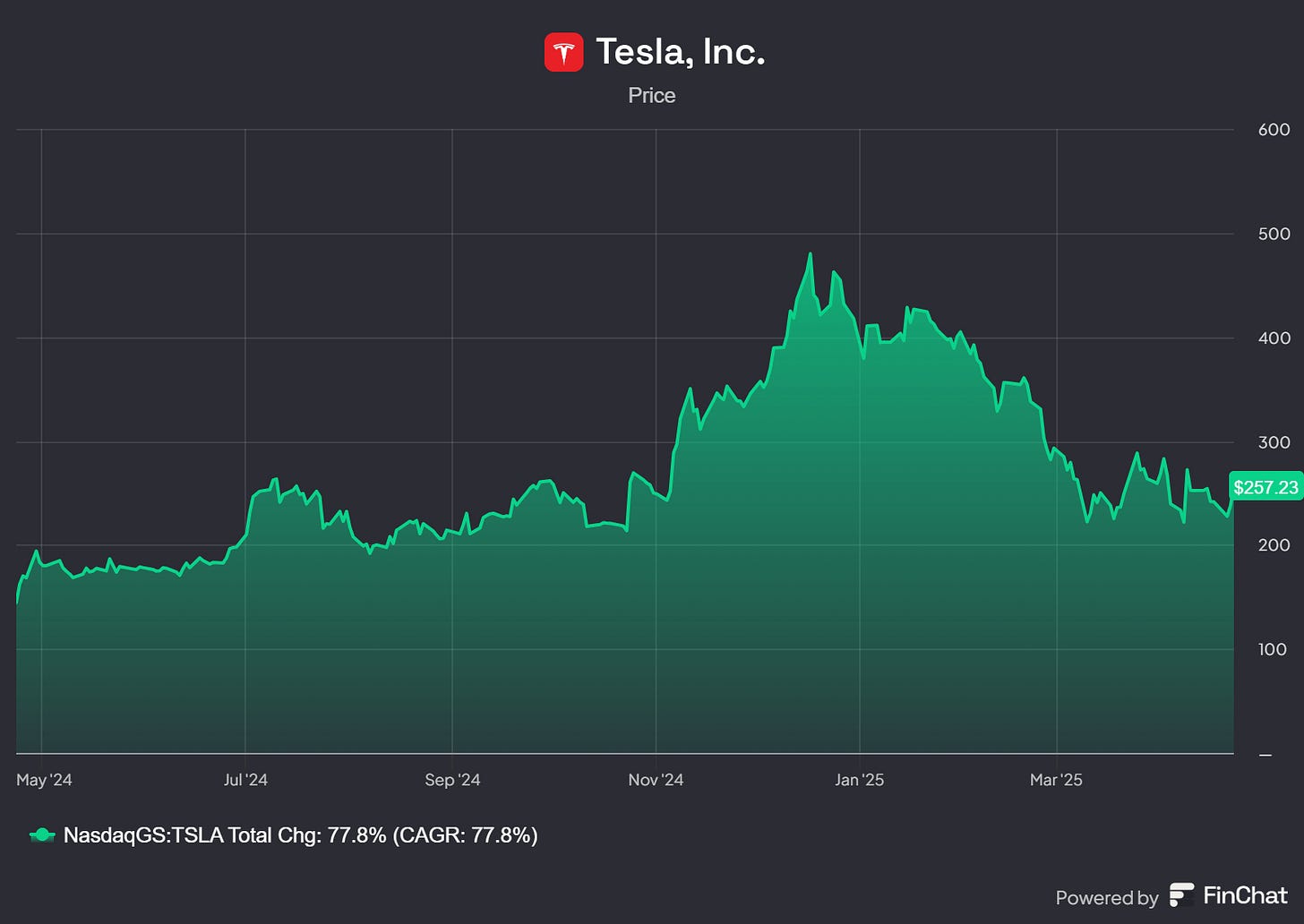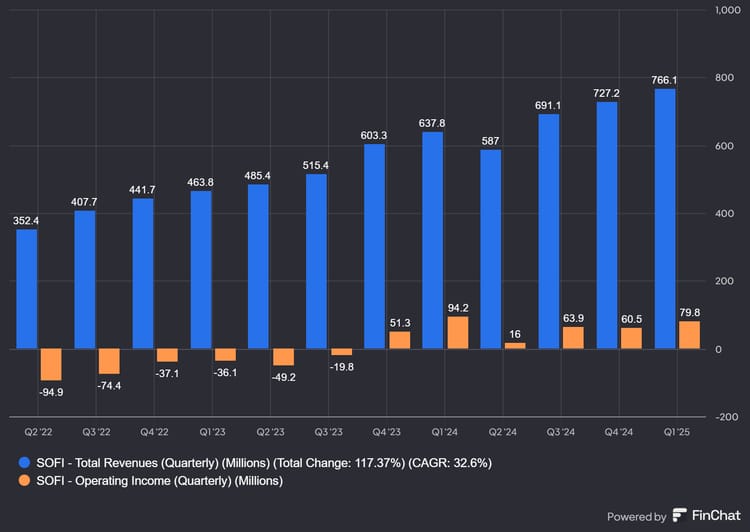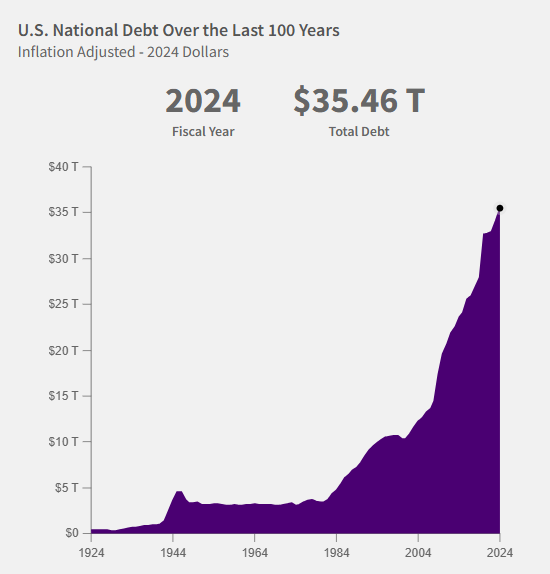Tesla, Inc. (TSLA) Q1 2025 Summary
Overview
Tesla, Inc. (TSLA), a pioneer in electric vehicles (EVs) and sustainable energy, reported its Q1 2025 financial results on April 22, 2025, highlighting a challenging quarter with declining vehicle deliveries, missed financial targets, and growing competitive pressures. Despite these setbacks, Tesla’s focus on cost optimization, energy storage expansion, and advancements in artificial intelligence (AI) and autonomous driving underscores its potential for long-term growth. This summary explores Tesla’s Q1 2025 performance, current challenges, future growth opportunities, and an evaluation of its stock valuation.
Get Our Monthly Stock Picks - Stocks Poised to Double Within 5 Years
Q1 2025 Financial Performance
Tesla’s Q1 2025 results reflected significant headwinds, with key metrics underperforming analyst expectations. Below are the key financial highlights, sourced from Tesla’s Investor Relations and various reports:
- Revenue: Total revenue fell 9% year-over-year (YoY) to $19.34 billion, missing the consensus estimate of $21.35 billion. Automotive revenue, Tesla’s primary revenue driver, declined 20% YoY to $14 billion, impacted by a 13% drop in vehicle deliveries and lower average selling prices due to discounts.
- Earnings Per Share (EPS): Adjusted EPS was $0.27, a 40% YoY decline and below the expected $0.39–$0.43 range, reflecting squeezed margins and reduced volumes.
- Net Income: GAAP net income dropped 71% YoY to $409 million, driven by lower automotive sales and increased AI-related expenses.
- Vehicle Deliveries and Production: Tesla delivered 336,681 vehicles, down 13% YoY and well below the anticipated 390,343. Production reached 362,615 vehicles, missing estimates of 412,148. The shortfall stemmed from production line retooling for the refreshed Model Y (Juniper), which caused weeks of downtime across all four factories.
- Energy Storage: Tesla’s energy storage business shone, deploying 10.4 GWh of products (e.g., Powerwall, Megapack), driving a 67% YoY revenue increase to ~$3 billion.
- Operating Margin: The operating margin contracted to 2.1%, compared to an industry average of ~10%, due to price cuts, production disruptions, and higher AI investments.
- Free Cash Flow: Tesla generated $0.7 billion in free cash flow, a positive signal of financial discipline despite the revenue and profit declines.
External factors, including a backlash against CEO Elon Musk’s political activities and rising competition from Chinese EV makers like BYD, compounded internal challenges like production disruptions and pricing pressures.
Company Performance: Strengths and Challenges
Tesla’s Q1 2025 performance paints a mixed picture. The automotive segment, accounting for ~70% of revenue, is under strain, with the 13% delivery drop marking Tesla’s weakest quarter since Q2 2022. Analysts project 2025 deliveries could decline 9% to 1.63 million vehicles, far from Musk’s earlier 20–30% growth target.
However, Tesla’s energy storage and services segments are emerging as growth drivers. The energy storage business, with 10.4 GWh deployed and 67% YoY revenue growth, is becoming a higher-margin contributor. The services segment, including supercharging and insurance, generated ~$2.8 billion in Q4 2024 and likely sustained momentum. These segments provide diversification amid automotive market volatility.
Tesla’s stock, trading at ~$252 as of mid-April 2025, has fallen 38% year-to-date, reflecting investor concerns about growth and Musk’s polarizing public image. The stock trades below its 50-day ($294.76) and 200-day ($289.99) moving averages, with high volatility (12% weekly). Despite this, Tesla maintains a 70% U.S. EV market share and is seeing positive demand for the Cybertruck and refreshed Model Y.
Future Innovation and Growth Prospects
Tesla’s long-term outlook rests on its ability to innovate and diversify. Key growth initiatives include:
- Autonomous Driving and Robotaxi: Tesla is accelerating its Full Self-Driving (FSD) efforts, targeting an unsupervised FSD option and a Robotaxi service launch in June 2025 in select U.S. markets. The vision-only FSD V12 and Hardware 4.0 upgrades show progress, but regulatory and technical challenges persist. A successful Robotaxi network could redefine Tesla as a high-margin AI and mobility company.
- Affordable EV: Tesla plans to launch a lower-cost EV in H1 2025, aimed at countering competition from BYD and expanding its market reach. This model is critical for volume growth.
- Energy Storage: With a projected 50% YoY revenue increase in 2025, Tesla’s energy storage business (Megapack, Powerwall) is capitalizing on global demand for renewable energy solutions.
- Global Expansion: Tesla is scaling production at Gigafactory Shanghai and Berlin and entering markets like Chile, positioning it to capture growing global EV demand despite logistical disruptions.
These efforts could reduce Tesla’s reliance on automotive sales, but execution risks—particularly in autonomy—remain significant given Musk’s history of ambitious but delayed promises.
Is Tesla Overvalued or Undervalued?
Tesla’s forward P/E ratio of ~90x is notably high, exceeding nine times the average for major automakers and more than doubling that of tech peers like Nvidia. This premium valuation sparks debate about whether Tesla is overvalued or undervalued.
Arguments for Overvaluation:
- High Valuation Metrics: The 90x P/E ratio assumes robust future growth, which Q1’s 13% delivery drop and 71% net income decline undermine. BYD, with higher 2024 sales, has a market cap ~1/6th of Tesla’s.
- Weak Near-Term Outlook: Analysts forecast a potential 5–9% sales decline in 2025, clashing with Tesla’s growth narrative.
- Risks: Regulatory hurdles for autonomy, competitive pressures, and Musk’s controversial public stance pose risks to demand and brand value.
Arguments for Undervaluation:
- Innovation Potential: Success in Robotaxi, FSD, and affordable EVs could drive exponential growth, justifying the premium.
- Energy Storage Momentum: The segment’s 67% YoY growth and 50% projected increase in 2025 enhance margins and diversify revenue.
- Market Leadership: Tesla’s 70% U.S. EV share, strong brand, and production cost reductions (e.g., lower COGS at Gigafactory Texas) provide a competitive edge.
Verdict:
Tesla’s stock appears overvalued based on current fundamentals, with its high P/E ratio relying heavily on speculative growth in autonomy and new products. Q1’s weak performance and competitive threats highlight near-term risks. However, for long-term investors, Tesla’s leadership in AI, energy storage, and EVs offers significant upside if milestones like the Robotaxi and affordable EV launches succeed. Risk-tolerant investors may find the stock appealing, but cautious investors should await signs of delivery recovery and margin improvement before entering.




